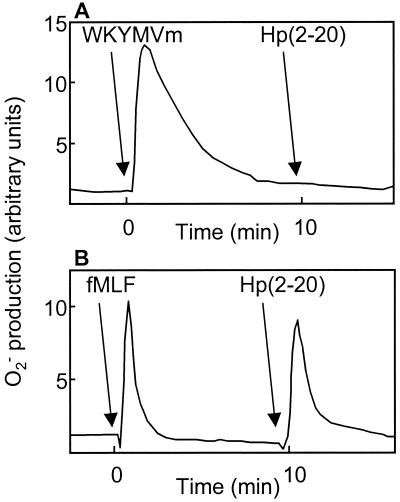FIG. 5.
Desensitization of Hp(2-20)-induced NADPH-oxidase activation. Binding of a chemoattractant to its G-protein-linked 7-transmembrane spanning receptor may induce NADPH-oxidase activation. Phosphorylation and cytoskeletal coupling of the ligated receptor terminate the response. This process is known as desensitization and makes the cells unable to generate a second burst of superoxide if they are challenged within 10 min with an activator that uses the same receptor (18). Neutrophils were first activated with WKYMVm (100 nM) (A) or fMLF (100 nM) (B), incubated for 10 min, and then challenged with Hp(2-20) (50 μM). WKYMVm, but not fMLF, was able to desensitize neutrophils against Hp(2-20) activation, implying that Hp(2-20) activates neutrophils via LXA4R/FPRL1 but not FPR. The superoxide anion release was measured by isoluminol-enhanced chemiluminescence (11). The arrows indicate the time of addition of agonists.

